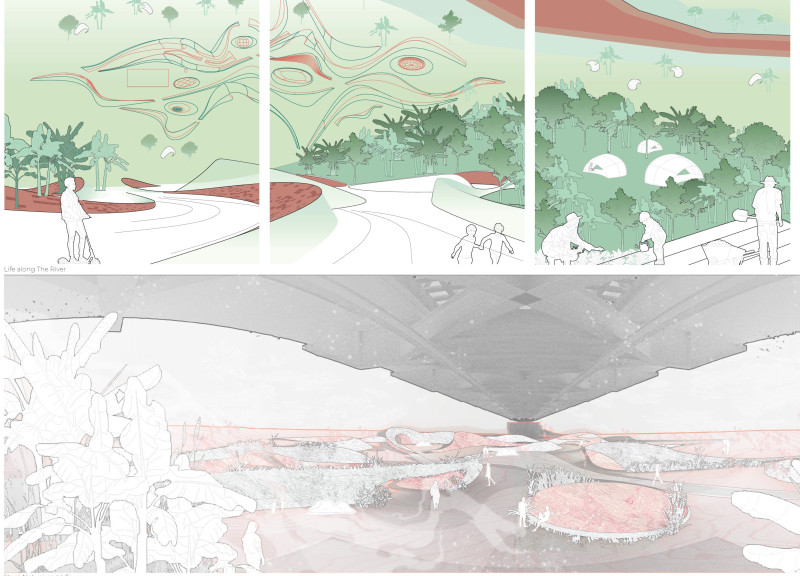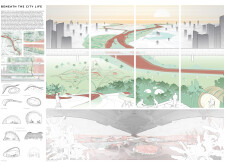5 key facts about this project
### Overview
The project focuses on the revitalization of the Red River Basin in Hanoi, Vietnam, aiming to enhance both the ecological and social functions of the area. The design seeks to reconnect urban life with nature, providing a vibrant community space that encourages interaction and environmental stewardship while addressing the needs of local residents.
### Spatial Integration and Community Engagement
The project features a well-considered spatial strategy, incorporating multi-functional areas such as amphitheaters, recreational spots, and vertical gardens. These spaces are designed to accommodate a variety of activities, fostering community engagement and promoting sustainable transportation through the inclusion of accessible pathways for pedestrians and cyclists. Additionally, the design integrates public art, farming initiatives, and educational programs, encouraging active participation from the community.
### Material Selection and Environmental Considerations
Materiality plays a pivotal role in the project's execution, emphasizing sustainability and aesthetic appeal. Key materials include bamboo, selected for its structural capabilities and environmental benefits; concrete, providing durability for foundational elements; glass, which enhances transparency and interaction with the surrounding landscape; and reclaimed wood, used for flooring and furniture, contributing to the project's eco-conscious ethos. This careful selection of materials reflects a commitment to creating spaces that harmonize with both the urban context and natural ecosystems.



















































